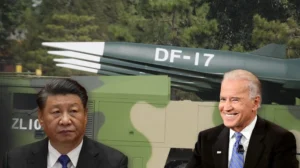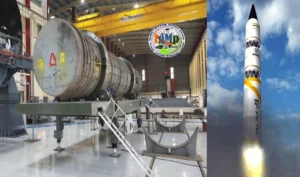 |
| Former Japanese PM Shinzo Abe will be remembered as the face of India-Japan friendship. (Photo: India TV) |
It is no secret that Abe was a clear India ally, throughout his term. To honour him, India even conferred Abe with the second highest civilian honour, the Padma Vibhushan award, putting him in the leagues of Nelson Mandela and Mother Teresa for India.
Prime Minister Narendra Modi also called him his “dear friend” and said his thoughts were with him. He will always be the face of India-Japan friendship and the face of Indian modernisation in the digital age.
Deeply distressed by the attack on my dear friend Abe Shinzo. Our thoughts and prayers are with him, his family, and the people of Japan.
— Narendra Modi (@narendramodi) July 8, 2022
Here are some times when Abe supported India making him the true friend in need.
Indo-Pacific:
Abe’s role in the security of the Indo-Pacific region while ensuring a free trade route based on international law has been one of his most important global contribution. Abe recognised India’s importance early in the show, as a democratic balancer to the Chinese hegemony in the future of Indo-Pacific integration efforts,
He promoted it in his 2007 “Confluence of the Two Seas” speech in the Indian parliament. Including a democratic India in the framework of Asia was not only seen as good geopolitics, but also good geo-economics, as a democratic India’s population and youth demographic was challenging Chinese authoritarian system.
Abe low-key persuaded India that its geographical footprint could not be confined to the Indian Ocean anymore and it needed to expand. He saw India on the international platform as a key player on either side of the Malacca Straits, which is a sensitive choke point channelling heavy inflow of international trade.
This initiative of Abe not only included India as an ally but an important player in the Indo-Pacific region for like-minded states like Australia, ASEAN countries, France, the UK, and the US.
Along with Indian Prime Minister Narendra Modi, Abe made structural changes to fulfil the goal of an open and free Indo-Pacific.
Quad grouping:
The former Japanese PM played a pivotal role in promoting the Quad security grouping and India’s status in it. It was of more importance as the hybrid nature of the grouping was unusual of Japanese pacifist constitution restrictions post the Second World War.
India’s problem with an unruly China at both land and hydro borders was tamed to an extent with the rise of Quad. A revitalised and ever-expanding Chinese Navy, with a sole purpose to provoke the countries in the Indo-Pacific region, still poses a threat to India in the sea, but the Chinese ambitions are put to check due to Quad and India has Abe to thank for that to a large extent.
Shinkansen:
Abe as the Japanese PM had reiterated many times that his country was committed to making the ambitious bullet train project in India a reality as soon as possible. Japan under Abe also decided to fund 80 percent of the much-anticipated Shinkansen or Bullet Train project with a soft loan of about Rs 80,000 crores.
The interest rate on this soft loan was 0.1 percent with a tenure of 50 years with a moratorium of 15 years.
The 500-km railway link is based on the Japanese technology of high-speed rail networks known for their safety and comfort. The project is being considered as a “game-changer” for India in many ways
A strong India:
In one of his lectures, Abe had said that “a strong India is in the best interest of Japan, and a strong Japan is in the best interest of India.” Since then, Abe had lived up to his words.
Under Abe, Japan continued to be the largest bilateral donor to India. The ODA (Official Development Assistance) from Japan has supported many infrastructure projects here. Japan had cumulatively committed until March 2013 ODA of US $ 40 billion, as per the Indian Ministry of External Affairs.
More than 60 projects were implemented under this assistance as of February 2013, according to the MEA data, including in the power sector, transportation, shipping, railways, renewable energy, etc.
In fact, until his final days in the Prime Minister’s office in 2020 due to ill health, he inked a key defence agreement with India on allowing each other’s militaries to access each other’s bases for logistics support.
Bhutan, Bangladesh, and Sri Lanka:
Under Abe’s tenure, Japan International Cooperation Agency (JICA) accelerated the construction of Dhubri Fulbari bridge over the Brahmaputra River. It was no ordinary bridge. It became a lifeline for a landlocked Bhutan.
China considers Bhutan as one of the five fingers to the palm that is Tibet that also include Nepal, Sikkim, Arunachal Pradesh, and Ladakh. The People’s Republic of China (PRC) considers it it’s holy duty to liberate these “five countries” and bring them to the Chinese fold. The often-provocative actions of China towards some parts of these regions.
In such a situation, this bridge gives landlocked Bhutan a chance of structural integration with the Pacific Ocean, instead of succumbing to Chinese sphere of influence.
The bridge will connect Bhutan to Vietnam via highways of India and Japan. This also provides a relief to India over the possibility of China breathing down its neck from Bhutan and secure its own regions of Sikkim and Arunachal Pradesh.
He also promoted India-Japan partnership in constructing the third deep sea container terminal at Colombo port as a response to Chinese aggressive efforts in making inroads in Sri Lanka as part of its expansionist push in the region undermining India. On a similar note, and with India’s tacit support Japan also built Matarbari port in Bangladesh against a Chinese contract.







